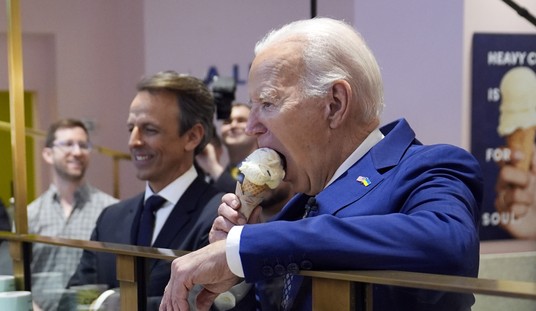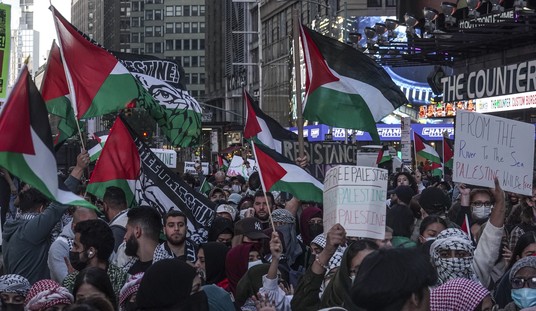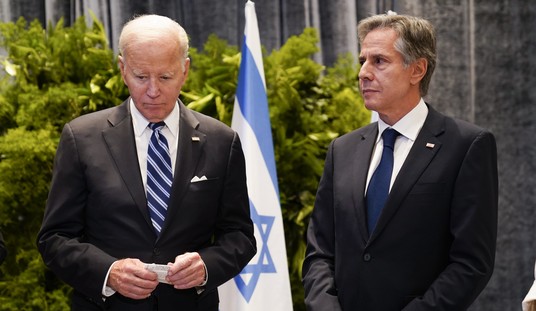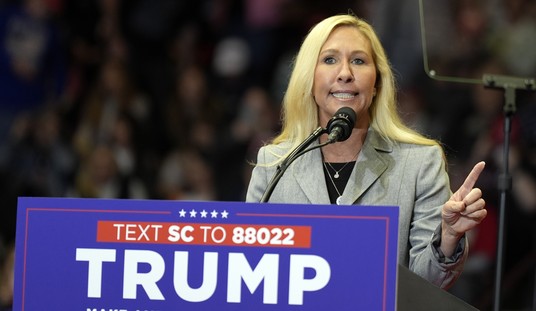As reported earlier by Susan Wright here, the Ninth Circuit has declined to immediately vacate the order from the Seattle judge halting enforcement of most parts of President Trump’s executive order on immigration. The order is here. They have set an expedited briefing schedule for the hearing on the government’s emergency motion, with the final papers due at 3 p.m. tomorrow, and a ruling to follow at any time after that.
The District Judge provided almost no legal justification for his order (which is not entirely uncommon in a TRO situation, although he might have given us a hint, given the level of importance of the issues). There is, however, video of the hearing, which you can see here. I’ve not watched the video in its entirety, but a commenter of mine has, and the commenter has provided me with a summary of the states’ arguments, which the commenter authorized me to reproduce in a post. Because of the lack of legal authority in the judge’s order, understanding the states’ arguments provides a window into the basis for that order. Here is my commenter’s analysis, with very light editing:
I watched the video of the hearing. In order to get relief via Temporary Restraining Order (TRO), the States must show irreparable injury, a likelihood of success on the merits, and a balancing of equities.
The States argue that the Order violates Due Process and, to a lesser degree, Equal Protection because it discriminates based on religion. The States concede that aliens and refugees who have never been in the U.S. have no Equal Protection rights, but their sponsors and families in the U.S. do. The focus of the States’ case is legal residents and US sponsors and families affected by the Order.
The States apparently did not assert discrimination based on national origin for the purpose of the TRO (although they might for the purpose of the case in chief). Instead, the States argue that some, not all, provisions of the Order violate the Establishment Clause by discriminating against one religion.
The States contend that even though the Order does not purport to ban Muslims on its face, the fact that it applies to predominantly Muslim nations, coupled with Trump’s rhetoric (which is apparently detailed in the pleadings or briefs, and covers the campaign until the present) about wanting a Muslim ban, means it is appropriate to look behind the words of the Order in deciding whether there is a rational basis for the Order. The Judge asked about the difference between what Trump said during the campaign “based on what he said in New Hampshire in June” and a Presidential Executive Order with commentary explaining it. The reply was that it might go to weight, but the Order was so early in Trump’s term — a mere week — that his campaign statements are relevant. In addition, after the election, the President’s advisers have been quoted as saying “the President asked them to come up with a Muslim ban.”
As for standing, the States rely on the Snapp doctrine of parens patriae, as extended by Massachusetts v. EPA, but also on the doctrine that the States have suffered injury as proprietors. The proprietary argument is that the Order unduly affects State tax revenue, and higher education institutions that employ foreigners who are affected by the Order (the employers of persons who are legally in the U.S. and were unexpectedly caught overseas and can’t return, the employees and family of employees who have been affected by the Order, and persons who would be affected by the Order and now cannot travel). First, the States lose tax revenue from persons who cannot come to the U.S. to work or travel. Second, the State funds used to employ persons has been wasted if they cannot perform their functions, which is a burden on the States as proprietors of the institutions. The States cited U.S. v. Texas, the immigration case in which Judge Hanen and the 5th Circuit said additional State costs/burdens in lost driver’s license revenue justified a stay of Obama’s DACA and DAPA orders.
The States also argued that any federal claim for deference because this is a federal immigration order was undermined since the Order is not consistent with the immigration laws passed by Congress, and since the Administration itself hasn’t provided a clear and consistent idea of what the Order means. For instance, in recent days, there have been 5 different Administration statements regarding whether legal residents and green card holders are affected by this Order. As a result, the States argue that hundreds of their legal residents effectively lost the right to travel because of uncertainty about the Order.
Finally, in the initial argument (not rebuttal), the States noted that they are challenging some parts of the Order as applied, and are not challenging the constitutionality of the entire Order. They also assert a States’ rights argument that States should have standing and authority to protect their and their residents’ interests from federal overreach when it comes to religion. [Note by commenter: This is a precedent that the left might regret.] And the States acknowledge that while they have no authority for a State suing the federal government over an Establishment Clause case, they believe there have not been any Orders like this.
Very illuminating. I thank my commenter both for the analysis and for granting me permission to use it in a post.
My commenter’s comment that “[t]he States apparently did not assert discrimination based on national origin for the purpose of the TRO” may signal that the debate among David Bier, Andrew C. McCarthy, myself, and my commenter SWC may not be central to the immediate litigation in the Ninth Circuit. (For that debate, see posts here, here, and here, and the links therein.) However, the Government’s emergency motion in the Ninth Circuit (h/t to Kevin M. for the link) does raise the issue, and make arguments quite similar to those made by SWC in comments to my posts. Here’s the Goverment’s initial argument on that issue:
Washington argued in district court that the President’s authority under § 1182(f) is limited by 8 U.S.C. § 1152(a)(1)(A), which provides, with certain exceptions, that “no person shall receive any preference or priority or be discriminated against in the issuance of an immigrant visa because of the person’s race, sex, nationality, place of birth, or place of residence.” But this restriction does not address the President’s authority under § 1182(f) to “suspend the entry” of aliens, which is an entirely different act under the immigration laws. An immigrant visa does not entitle an alien to admission to the United States, and even if an alien is issued a valid visa, he is subject to being denied admission to this country when he arrives at the border. See, e.g., Khan v. Holder, 608 F.3d 325, 330 (7th Cir. 2010). There is no inconsistency between § 1152(a)(1)(A) and the President’s issuance of the Order under § 1182(f).
I thought Bier disposed of that pretty well in his original op-ed:
Mr. Trump may want to revive discrimination based on national origin by asserting a distinction between “the issuance of a visa” and the “entry” of the immigrant. But this is nonsense. Immigrants cannot legally be issued a visa if they are barred from entry. Thus, all orders under the 1952 law apply equally to entry and visa issuance, as his executive order acknowledges.
As far as the two statutes being “entirely different” acts, I think the point I made in an update to this post and fleshed out in this post has never been rebutted to my satisfaction. Namely:
I have shown that: 1) the two provisions are indeed in conflict when a President issues an order discriminating against immigrants on the basis of nationality or place of residence; 2) the only way to resolve this conflict is to view the President’s power to suspend entry under section 1182(f) as an exception to section 1152(a); and 3) Congress foreclosed the possibility that section 1182(f) functions as such an exception, by listing other exceptions but pointedly refusing to list 1182(f) as one.
The Government continues:
In any event, even if there were thought to be some potential inconsistency between § 1152(a)(1)(A) and § 1182(f) , 8 U.S.C. § 1152(a)(1)(B) makes clear that the statute does not “limit the authority of the Secretary of State to determine the procedures for the processing of immigrant visa applications * * *.” This establishes that the Order is not covered by the restrictions of subsection (A), because the Order directs a review and revision of procedures for processing of visa applications and adopts procedures for a temporary suspension and then resumption of processing of certain visa applications following that review. See, e.g., Order §§ 3(a), 5(a).
This is also an argument that SWC has made. Again, I think Bier’s retort makes sense:
To resolve this case, Congress amended the law in 1996 to state that “procedures” and “locations” for processing immigration applications cannot count as discrimination. While there is plenty of room for executive mischief there, the amendment made clear that Congress still wanted the discrimination ban to hold some force. A blanket immigration prohibition on a nationality by the president would still be illegal.
In other words, the provision allowing the Secretary of State to set “procedures” is not fairly read as a provision that swallows the nondiscrimination provision whole. However, this is admittedly a close issue, and how a court may rule on it is likely to depend on the particular judges and their general pre-existing views on these matters.
The Government concludes (on this topic):
Furthermore, while the review is pending, the Secretaries of State and Homeland Security have discretion to grant visas on a case-by-case basis. Id. §§ 3(g), 5(e). Washington’s interpretation of the two provisions, in contrast, would lead to the untenable result that the United States could not suspend entry of nationals of a country with which the United States is at war, which would raise a serious constitutional question about Congress’s ability to restrict the President’s Article II authority to ensure the nation’s security.
I don’t think this follows at all. If we were actually at war — a war declared by Congress, and not some amorphous “war on terror” or “war on drugs” or other made-up “war” that is not actually a “war” as defined by the Constitution — then the President’s Article II authority would certainly loom far larger. I would argue that Congress’s decision to declare war would constitute an implicit grant of authority to the President to take necessary actions as Commander in Chief in the area of protecting the country from invasion by its enemies. In the absence of a declared war, however, I think we are back to the Youngstown analysis that I have discussed in my previous posts. Congress’s power in the area of immigration and naturalization is plenary, and only if Congress has delegated that power — a statutory inquiry — or if a state of declared war increases the President’s Article II powers, can a President act in contravention of a law like section 1152(a)’s nondiscrimination provision, which has been duly passed by Congress and signed by a President.
We’ll know a lot more when the Ninth Circuit rules. This is obviously headed towards a 4-4 Supreme Court, so the Ninth Circuit’s ruling may be extra critical at this juncture.













Join the conversation as a VIP Member